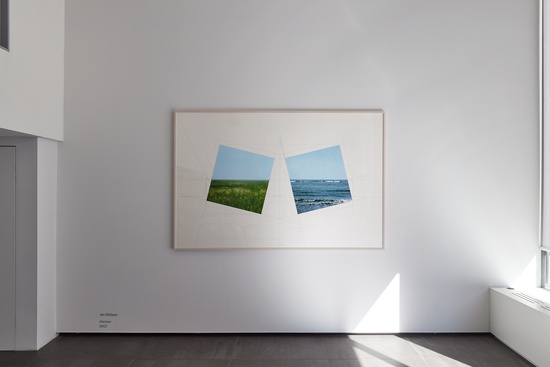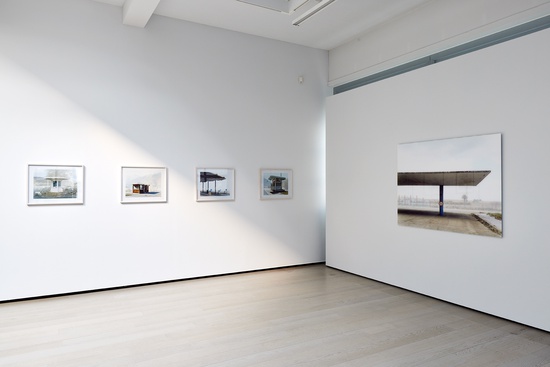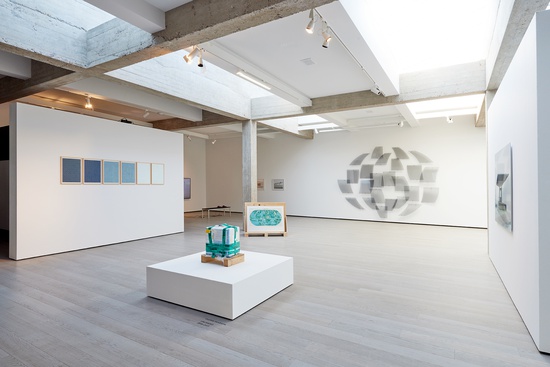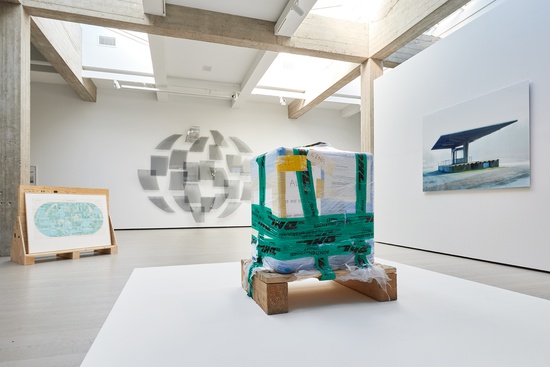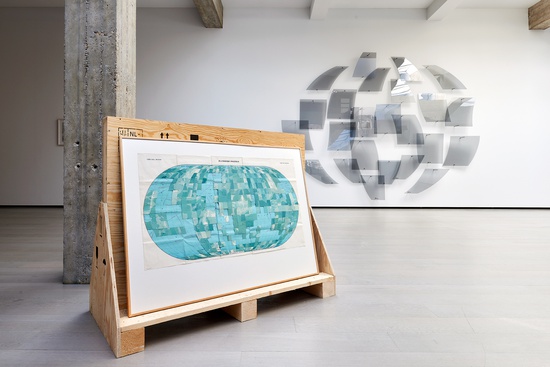ExhibitionHorizon, Interrupted
Curator: Fadwa Naamna
Artists: Lana Čmajčanin, Jan Dibbets, Xandra van der Eijk, Manal Mahamid, Josef Schulz, Giuditta Vendrame, Stijn Verhoeff
Coming from Palestine, where the land is divided and segregated, my first road trip in Europe felt like a utopic journey. With its open borders, one could almost forget that this continent was parceled out only a few decades ago and that this openness came after multiple bloody battles. Beyond this ostensible tranquility, however, territorial disputes are alive and kicking; from the Russo-Ukrainian War and the Northern Ireland Protocol, to Kashmir, Korea, and even Antarctica where no human permanently lives, geopolitical conflicts have also globally affected the lives of those who are geographically distant.
Borders are imaginary lines, subjective, infinite, and abstract. But the moment they are inscribed on a map, they possess new social and political meanings. They are not natural even if they’re defined by nature. Be it shaped by mountains, rivers, seas, or fences of barbed wire, borders are imposed to mark sovereignty and control. They separate between nation states, between interior and exterior, and all what is considered to be “ours” and “theirs”.
But a border isn’t merely a physical entity, it’s also a division between ideas. It’s the boundaries that we determine and establish for the definitions, values, and categories according to which we live and look at the world around us. It’s through these boundaries that we are able to distinguish opposite, binary meanings including life and death, good and evil, black and white, as well as similar versus different. Borderlines can thus be a device of polarization as they produce hierarchical relationships between races, cultures, socio-economic classes, and genders, among others.
‘Horizon, Interrupted’ brings together a number of artworks that foreground different readings on borders, territories, and transition. While some works deal with the idea of borders directly, others tackle the concept of liminality and landscape division from a poetic and conceptual perspective. Can we contemplate human-made borders through non-human lenses? Could the global political order be maintained in a world without frontiers?



